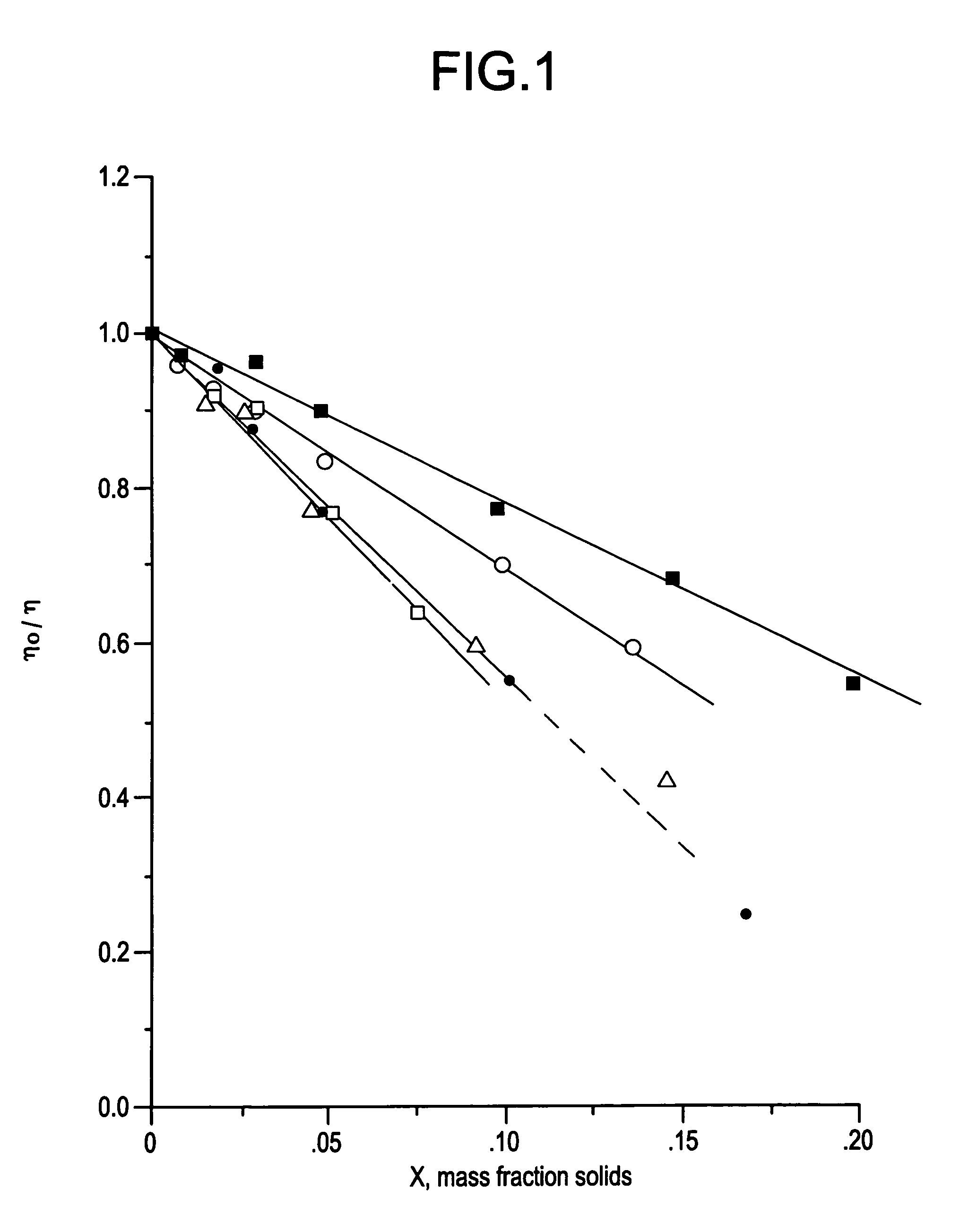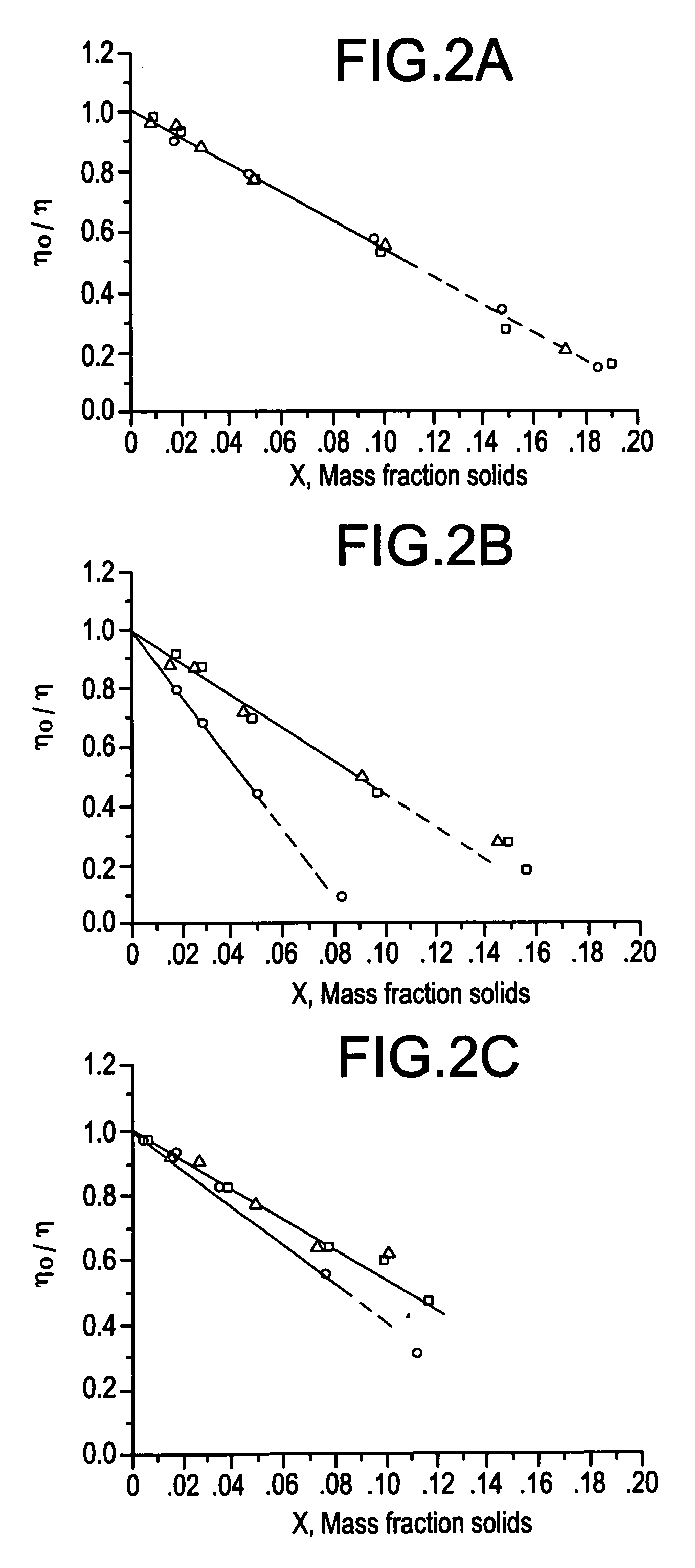Formulation suitable for ink receptive coatings
a technology of ink receptive coating and formulation, which is applied in the direction of synthetic resin layered products, natural mineral layered products, thermal imaging, etc., can solve the problems of coating suffering from the shortcoming of relatively long ink dry time, no longer continuous binding phase, and insufficient binder to fill the gaps, etc., to achieve good ink absorption properties, high gloss finishes, and internal porosity of particles
- Summary
- Abstract
- Description
- Claims
- Application Information
AI Technical Summary
Benefits of technology
Problems solved by technology
Method used
Image
Examples
example i
Silica Gel Particles Derived from Hydrogel Parent
[0110]Well drained hydrogel1 was presized by a Prater mill to a median particle size of approximately 30μ. The powder was then slurried in deionized water (DI) yielding a slurry of about 20% by weight solids and pH of about 8. This slurry was fed to a five (5) liter Drais media mill (model PM5RLH, 1.5 mm, glass media) at a rate of one liter per minute resulting in a viscous slurry. 1Hydrogel prepared at about 1.5 pH to produce 19% by weight silica and washed with dilute NH4OH.
[0111]Separation of the coarse and fine (submicron) fractions of the milled silica gel product was accomplished by a two step centrifugation process (90 min. at 1400 G's, decant, then 40 min. at 2,000 G's). The final submicron particle suspension was obtained by simply decanting. The solids content of the supernatant dispersion was 13 wt. % and yield was determined to be 41% (on a dry SiO2 basis).
[0112]
Particle Size Distribution (Horiba 900)2 10%.13μ 50%.22μ 9...
example ii
Silica Gel Particles Derived from Hydrous Gel Parent
[0113]Another submicron silica gel product was made using the same process as described in Example I except that the parent gel was presized in an air classification mill yielding a median silica gel particle of approximately 15μ. The gel is partially dried during this process with its moisture content (measured as total volatiles) dropping from about 67% to 55% by weight thus forming a hydrous gel material.
[0114]After media milling and centrifugation as described in Example I (except at 27% solids vs. 20% in Ex. I), a supernatant comprising a dispersion of 12 wt. % solids at a yield of 10% was obtained. The supernatant had the following particle size distribution:
[0115]
Particle Size Distribution (Horiba 900) 10%.13μ 50%.18μ 90%.30μ99.9%.55μ
example iii
Silica Gel Particles Derived from Aerogel Parent
[0116]Wet-milled Genesis™ gel was slurried to approximately 20% solids by weight in deionized water and the pH was adjusted to about 8. The slurry was then wet milled using a Netzsch LMZ-11 mill (with 0.6-0.8 mm SEPR media) at 3.8 liters per minute. The milled slurry was then diluted to 14.9% solids with DI water using a Myers mixer.
[0117]Separation of the coarse and fine fractions of the milled gel was accomplished by a two step centrifugation process, i.e., 90 minutes at 1,050 G's, decant, then another spin at the same conditions.
[0118]The total solids was 8.8% and the particle size distribution was:
[0119]
Particle Size Distribution (Horiba 900) 10%.086μ 50%.121μ 99%.181μ99.9%.322μ
PUM
| Property | Measurement | Unit |
|---|---|---|
| particle size | aaaaa | aaaaa |
| zeta potential | aaaaa | aaaaa |
| zeta potential | aaaaa | aaaaa |
Abstract
Description
Claims
Application Information
 Login to View More
Login to View More - R&D
- Intellectual Property
- Life Sciences
- Materials
- Tech Scout
- Unparalleled Data Quality
- Higher Quality Content
- 60% Fewer Hallucinations
Browse by: Latest US Patents, China's latest patents, Technical Efficacy Thesaurus, Application Domain, Technology Topic, Popular Technical Reports.
© 2025 PatSnap. All rights reserved.Legal|Privacy policy|Modern Slavery Act Transparency Statement|Sitemap|About US| Contact US: help@patsnap.com



